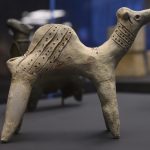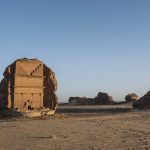Indeed, a large part of the varied collections at the MAF comes directly from the Medici’s holdings. The museum is famed for its Egyptian section, which was removed from the grand duchy’s collection in its final years to act as a stand-alone museum. Following Italian unification, additional pieces were added to the collection in the 1870s, including the famous Chimera of Arezzo, The Orator, Minerva, François Vase and the Fibula Corsini.
Museum director Mario Iozzo elaborated, “Florence’s National Archaeological Museum is the largest of its kind north of Rome and, together with Villa Giulia in Rome, it is the most important museum in the world for Etruscan art and the civilization of that people, which played a fundamental role in forming modern Western civilization.
The museum also comprises the Egyptian Museum, which is second in size only to Turin’s Egyptian Museum and whose collections combine with those at the Louvre, a result of the 1828–29 French-Tuscan expedition with Ernesto Schiaparelli and Jean-François Champollion, who deciphered the mysterious hieroglyphs for the first time.”
Well-considered exhibitions provide yet another reason to visit this rich and research-centric museum. On March 10, lasting until March 10, 2019, The Art of Donating. New Acquisitions of Florence’s National Archaeological Museum will open, showcasing 125 works donated to the museum and its recent acquisitions. Expect Greek figurative vases, Roman statues, portraits and sarcophagi as well as two modern reconstructions of a Greek ship and an aulos, a Greek musical instrument.
The Florentine

















